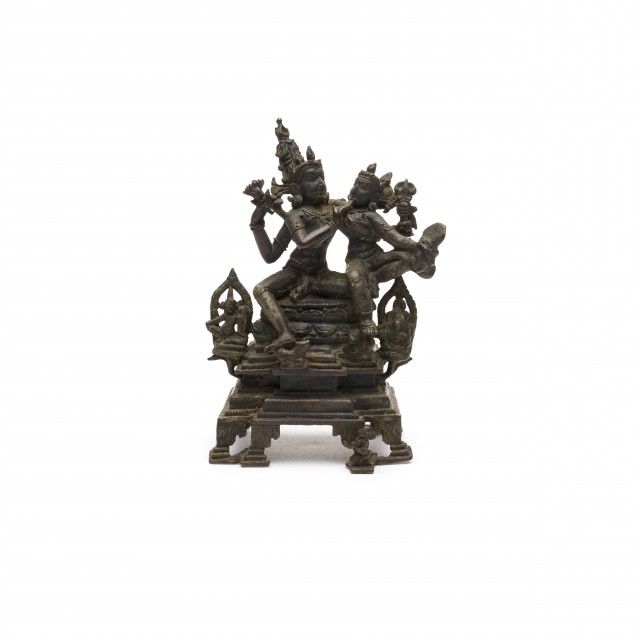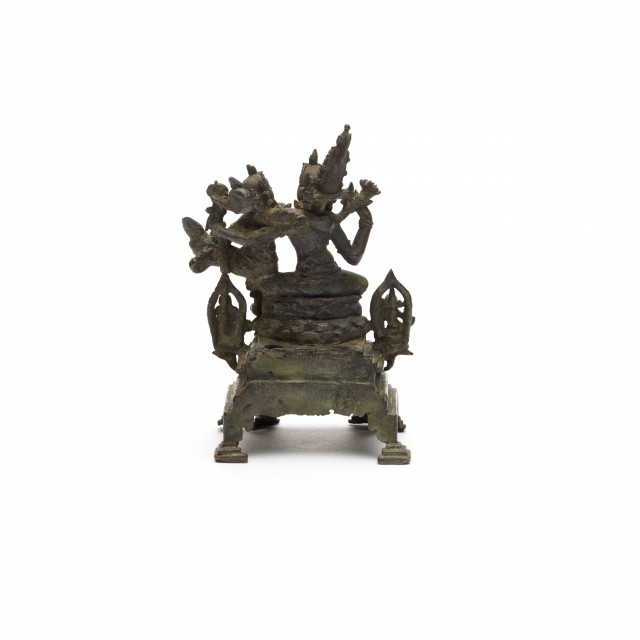Shiva and Parvati (Uma-Maheshvara)

Photography by Synthescape, Digital image © Asia Society

Photography by Synthescape, Digital image © Asia Society
Shiva and Parvati (Uma-Maheshvara)
Late 10th-11th century
India, Bihar or Bengal
Copper alloy
H. 5 1/2 x W. 3 7/8 x D. 3 1/8 in. (14 x 9.8 x 7.9 cm)
Asia Society, New York: Gift from The Blanchette Hooker Rockefeller Fund, 1994.2
Licensing inquiries
In this image, Shiva and his wife Parvati tenderly embrace each other, reminding the devotee that they are the ideals of human, physical love. Sculptures of this theme, commonly called Uma-Maheshvara after two other names of Shiva and Parvati, emphasize the more benign and playful aspects of Shiva as well as his loving relationship with Parvati and with his sons, Ganesha, seated to Parvati's left and Karttikeya, seated to Shiva's right. The predominance of female donors on small bronzes of this theme suggests that it may have held some special significance for woman and may have been a focus of private devotion rather than of temple worship. The bull Nandi, Shiva's vehicle (vahana), sits below his right leg, while Parvati's vehicle, the lion, is below her right leg.


